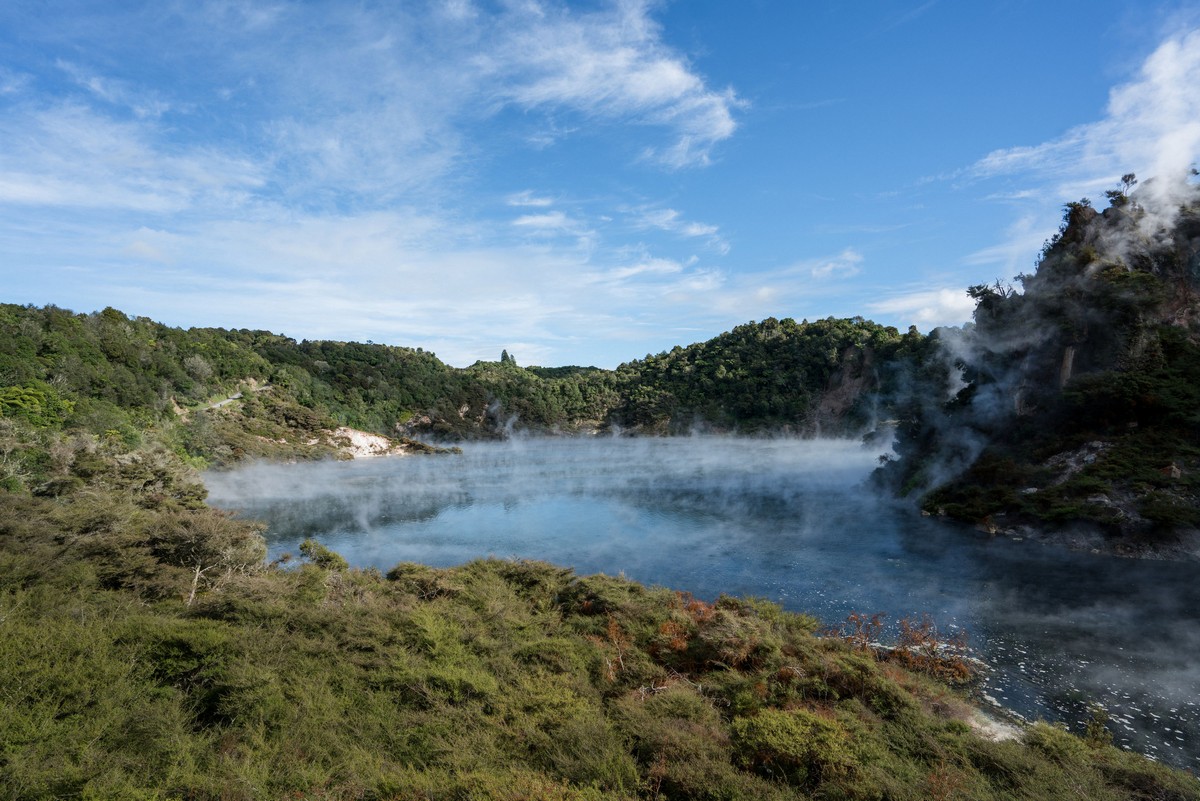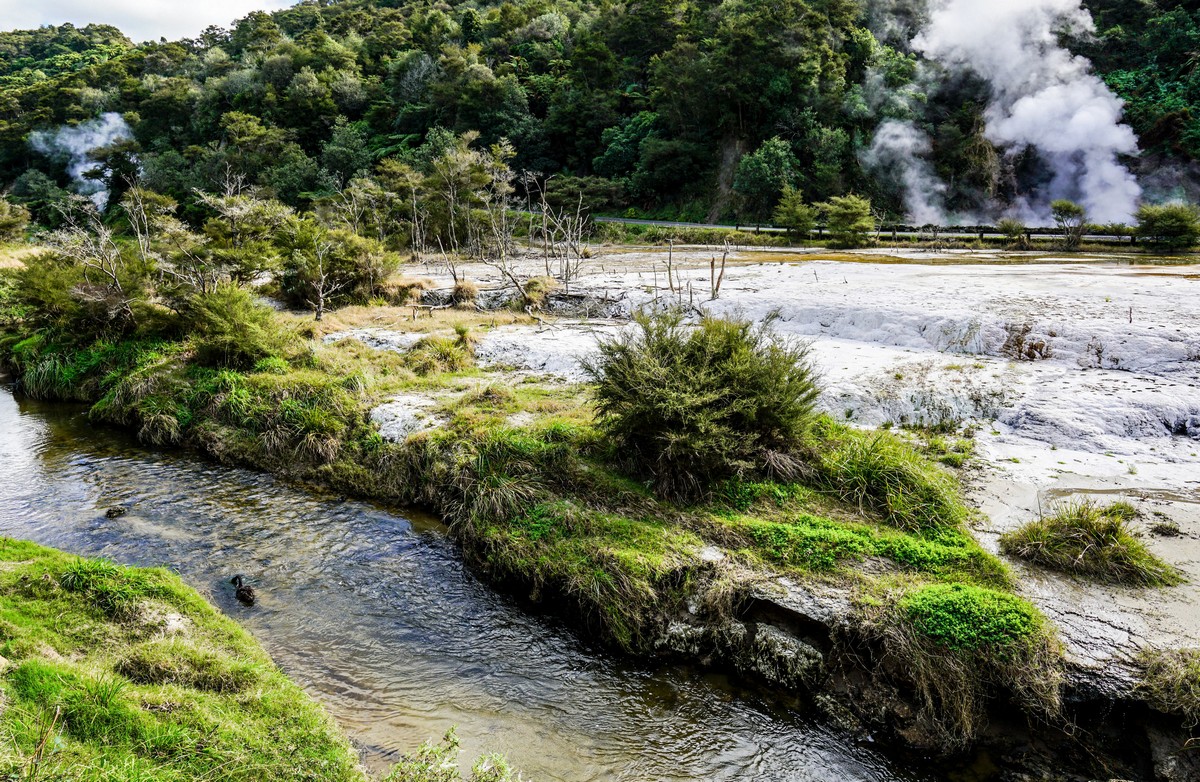June 20, 2017
NZ Infernal Volcanic Features.
Continuing my tales about Waimangu and Tarawera. This is a story of volcanic miracles and the amazing events that unfolded here in days of old. Just to remind you of the chain of events, my last story ended next to a crater filled with boiling chemical-laden water. And here it is:
Turn your back on this, and you’re right in front of the place where the largest known geyser on Earth erupted in the 1900s – the Waimangu. Every 36 hours, this geyser shot out a water jet reaching up to 400m; each eruption lasting several hours.
In 1904, some magic underground mechanism broke down, and the eruptions stopped. The old photos give an idea, though, of how staggering that sight must have been: a water jet erupting to the height of a 100-storey building! We’re talking here about roughly the height of the Moscow City, the Shard in London or similar global landmarks.
Alas, this attraction has closed indefinitely. But all around it, there are smaller geothermal features sloshing and bubbling away:
The next natural volcanic singularity is the Inferno Crater. The water in this is psychedelically bright in color. But the most amazing thing about this place is that this reservoir pulsates: in a 38 day cycle, the water first rises to its maximum level, overflows the crater (the channel can be seen in the second photo), then drops some 12 meters and starts all over again. The water temperature also changes during the cycle, from a fairly comfortable 35°C to a very hot 80°C.
What an amazing phenomenon! But there are even more amazing things to come.
This is very comfortable walk – following paths and flights of steps. The views around are wonderful and the route is well signposted, with lots of useful information on display.
All of a sudden, there’s a black swan (this is exactly how a real black swan should emerge, according to Nassim Nicholas Taleb‘s theory.) Can you see the swan? No? But it’s there!
It’s there in the creek, towards the bottom left :) By the way, this is typical of Australia and New Zealand: many things upside down and the other way round. So all the swans are black here, instead of white :)
There are also small, curious birds, bustling around like mosquitoes at arm’s length and looking rather comical.
As New Zealand’s Department of Conservation explains on Instagram, this bird is a Pīwakawaka.
https://www.instagram.com/p/BU6OnycFXE6/
So, we made it to the lake! Its name is Rotomahana, which apparently means “warm water” in Maori.
Every couple of hours or so, there’s a boat trip you can take. When I was here before, I wished I could come back and take a ride on that boat. And now that wish has come true!
Frankly, the 50 minute boat trip on the lake is not the most exciting thing about the valley – you can skip it if you’re short of time. But if your travel schedule will stretch to it, make sure you take the ride – it’s a very curious experience.
Somewhere beneath this water, on the lake bed, there are absolutely miraculous natural features – Pink and White Terraces that were drowned during the 1886 eruption.
Allegedly, these unique features are still there under the water, all fairly intact.
Around the edges of the lake, the water exhibits classic volcanic behavior:
By the way, there’s a legend about a phantom canoe, said to have seen on the neighboring Tarawera lake 11 days before the eruption. There were several witnesses to this phenomenon, and what they actually saw is still a mystery.
Here is a more detailed comment from my casual fellow-traveler A.B.:
As the legend goes, the canoe was seen on the lake 11 days prior to the eruption, and was reportedly seen by a variety of tourists, who were very far from following traditional Maori beliefs.
It is said that, before the next eruption, the canoe will appear again.
So, if you happen to visit the faraway beautiful land of New Zealand, take a boat trip, and meet a group of people in a canoe all dressed as traditional Maoris it might be a good idea to change your return ticket and take an earlier flight back home. Okay, so they could just as easily be a folk band – but it’s worth checking with the locals.
On the other side of the lake is the Tarawera volcano, which is another must-see.
Stay tuned – more about this in later stories.










































